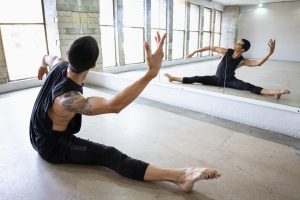Chapter 9 – Playback

North American aural skills training often focuses heavily on music notation, but many of the world’s rich musical traditions do not rely primarily on notated music. This is true in many approaches to composition, where musicians simply improvise or compose at an instrument, and in passing down oral traditions, where experienced musicians might perform songs and exercises for less-experienced musicians, who learn them by ear.
In this chapter, we’ll be working directly with music, and without notation. We’ll listen to music and play it back, and think about what we can add to it. This way of working with aural skills—when it’s working—can feel delightfully spontaneous and immediate.
In addition to the benefits of working directly with sound, playing music back also has benefits for other aural skills—including those that use notation. Many of the best transcribers of music, for example, are constantly imagining what it would feel like to play the music they are transcribing. It gives them yet one more way to think through the sound and how to represent it.
We’ve used the word “play” here, which might suggest that we’re more interested in external instruments rather than voices. For the most part, that’s true. There are benefits to singing music back, as we’ve experienced in the chapter on internal hearing and tuning. But when we want to conceptualize the relationships within a piece of music, it is beneficial to use an instrument with discrete parts (frets, keys, valves, finger positions, etc.) that help us associate sounds with specific motions and locations. As a result, we’ll consistently use language in this chapter that suggests playing this kind of instrument, and we encourage vocalists to use a secondary instrument even if it’s not terribly familiar. But if you feel you can get similar benefits from singing back, by all means, adapt this chapter to fit your needs.
Finally, in this chapter, we’ll mostly be working with small portions of music—a phrase or small section, for example. We’ll reserve thinking about entire pieces until the chapter on Transcription, though you are of course encouraged to work with as much music as you feel comfortable with here.
Learning Objectives
Students will be able to:
- Determine an appropriate meter and key for music they hear.
- Play back the rhythms of heard music.
- Compare heard pitches to the key center in order to figure out how to play them back.
- Replicate heard bass lines.
- Replicate heard inner voices when appropriate.
Image Attributions |
|

